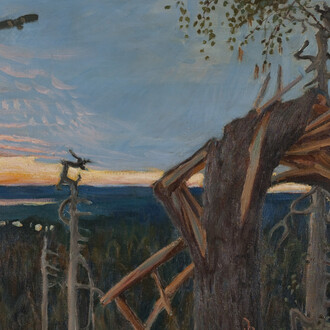In August 2024, 100 years will have passed since the birth of the pioneer and trailblazer in Finnish concrete art, Lars-Gunnar “Nubben” Nordström (1924–2014). Trained as an interior architect and practically self-taught as an artist, Nubben was a key influential figure in Finnish post-war modernism and a multidisciplinary reformist in art. The exhibition presents a selection of around twenty works from the collections of the Finnish National Gallery: paintings, sculptures, and graphic art from the 1940s and 1950s.
The exhibition sheds light on the reception of early concrete art in Finland, the zeitgeist in that era, and the great importance of an international outlook for Nordström and like-minded artists. The Finnish art debate of the 1950s was characterised by heated confrontations. Verbalising a new visual idiom was difficult for critics, and there was much conceptual confusion.
In the 1950s, the Ateneum acquired just two works by Lars-Gunnar Nordström: the serigraphs Composition in blue (1952) and Vihreä taistelu (The green battle, 1952). The other works in the exhibition were acquired only after the mid-1970s, when concrete art had established itself on the Finnish art scene. The 1950s were also a time of reform in Finnish sculpture, and Lars-Gunnar Nordström was one of the most open-minded experimentalists in this field, too. In the mid-1950s, scrap metal became the artist’s material of choice, and he worked it by cutting and welding, producing a series of light, dynamic sculptures. The sculptures Tandem and Twist were influenced by the work of the American artist Alexander Calder.
The title of the woodcut Blue moment (1948–1949) is a direct reference to jazz music, which the artist loved, and to trumpet playing, a hobby of his youth. “I construct it [my art] mathematically, as if it were music; it’s music to the eye, with chords and rhythms based on the intrinsic mechanics of colours”, said Nubben in 1978, describing his way of working.
The exhibition is part of the Nubben 100 anniversary year programme, and it is curated by the chief curator of the Ateneum, Sointu Fritze.
The Fokus Gallery presents concise displays, with selected artists or themes from the Ateneum collection. The gallery is located on the second floor of the museum, which is also where the collection exhibition A question of time is staged.
















